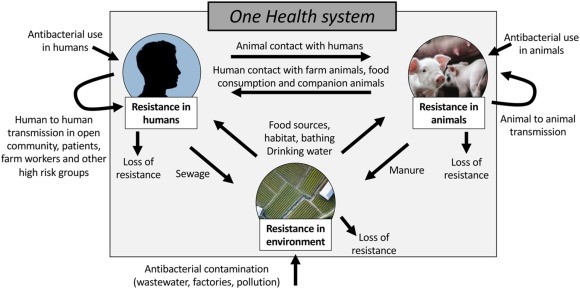7667766266
enquiry@shankarias.in
Recently United Nations General Assembly held a high-level meeting on AMR emphasizing prevention.


To know the causes of AMR , click here
One Health is an integrated, unifying approach that aims to sustainably balance and optimize the health of people, animals and ecosystems.
To know more about one health, click here

|
One Health AMR initiatives of India |
|
What lies ahead?